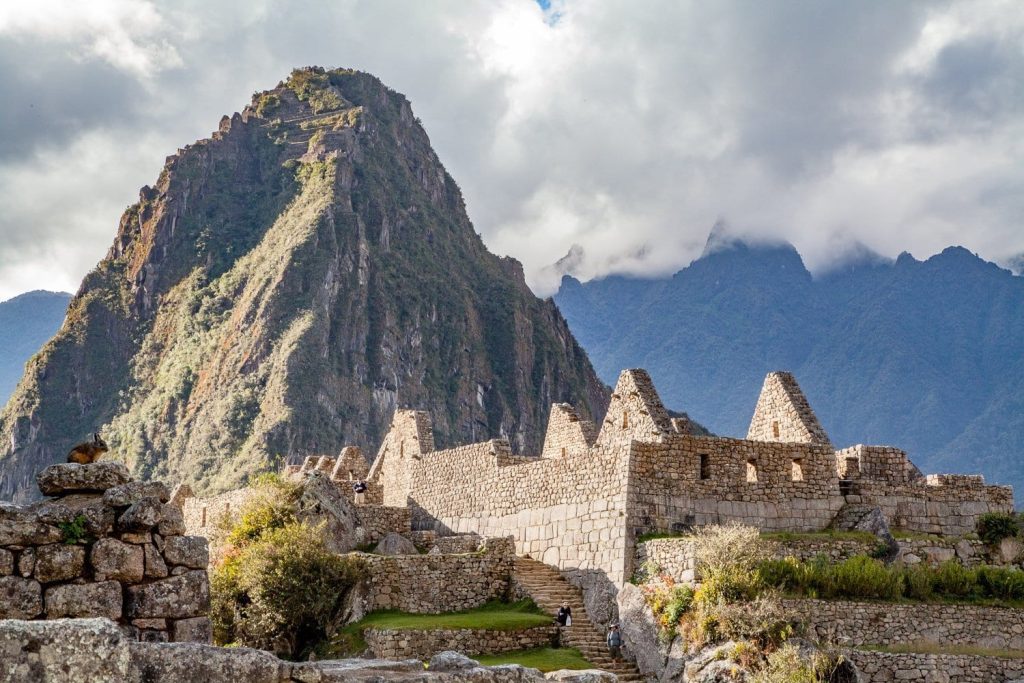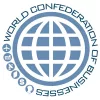
What is the Elevation of Machu Picchu?
Welcome to our guide on the elevation of Machu Picchu! Machu Picchu, a UNESCO World Heritage Site and one of the New Seven Wonders of the World, is a fascinating archaeological site located in Peru. In this article, we will delve into the history of Machu Picchu, its geographical location, and most importantly, its elevation.
History of Machu Picchu
Built during the height of the Inca Empire in the 15th century, Machu Picchu served as a royal estate for the Inca emperor. It remained hidden from the outside world until its rediscovery by Hiram Bingham in 1911. Since then, it has captivated the hearts of millions of visitors from around the globe.Geographical Location
Situated in the Andes Mountains, Machu Picchu is nestled on a ridge between two peaks – Machu Picchu and Huayna Picchu. It is located in the Cusco Region of Peru, about 80 kilometers northwest of the city of Cusco. The site’s strategic location provides breathtaking views of the surrounding mountains and the Urubamba River below.Understanding Elevation
Elevation refers to the height above sea level. As elevation increases, the air becomes thinner, leading to a decrease in oxygen levels. This decrease in oxygen can cause altitude sickness, a condition that affects some individuals when they ascend to high altitudes too quickly.Elevation of Machu Picchu
The exact elevation of Machu Picchu is approximately 2,430 meters (7,970 feet) above sea level. This moderate altitude, combined with the unique climate and stunning landscape, makes Machu Picchu a truly remarkable destination.Factors Affecting Altitude Sickness
Altitude sickness can affect anyone, regardless of age or fitness level. Factors that can increase the risk of altitude sickness include rapid ascent, dehydration, and a personal history of altitude sickness. It is important to be aware of the symptoms and take necessary precautions to ensure a safe and enjoyable visit to Machu Picchu.Best Time to Visit
The best time to visit Machu Picchu is during the dry season, which runs from May to September. During this time, the weather is generally clear, and the chances of rainfall are lower. However, it is important to note that Machu Picchu can be visited year-round, and each season offers a unique experience.Tips for Acclimatization
To minimize the risk of altitude sickness, it is recommended to spend a few days acclimatizing in Cusco or other high-altitude destinations before visiting Machu Picchu. It is also important to stay hydrated, avoid strenuous activities upon arrival, and listen to your body’s signals. If symptoms of altitude sickness persist, it is advisable to descend to a lower altitude and seek medical attention if necessary.Conclusion
Machu Picchu’s elevation adds to the allure and mystique of this ancient wonder. The breathtaking views, rich history, and unique geographical location make it a must-visit destination for adventurers and history enthusiasts alike. By understanding the elevation of Machu Picchu and taking necessary precautions, you can ensure a safe and unforgettable experience in this remarkable place.Frequently Asked Questions
1. Why is the elevation of Machu Picchu important?
The elevation of Machu Picchu is important as it affects the climate, oxygen levels, and the risk of altitude sickness for visitors. Understanding the elevation helps in planning and preparing for a safe and enjoyable visit.2. What is the exact elevation of Machu Picchu?
The exact elevation of Machu Picchu is approximately 2,430 meters (7,970 feet) above sea level.3. How does the high elevation affect visitors?
The high elevation of Machu Picchu can cause altitude sickness in some individuals. Symptoms may include headache, nausea, dizziness, and shortness of breath. It is important to acclimatize properly and take necessary precautions to minimize the risk.4. Are there any precautions to take when visiting Machu Picchu at high altitudes?
Yes, there are several precautions to take when visiting Machu Picchu at high altitudes. These include spending a few days acclimatizing in Cusco or other high-altitude destinations, staying hydrated, avoiding strenuous activities upon arrival, and listening to your body’s signals. If altitude sickness symptoms persist, it is important to descend to a lower altitude and seek medical attention if necessary.
Top Tours in Peru 2023
- Tour in Peru 5 days visit: Cusco, Machu Picchu, Sacred Valley and Rainbow Mountain
- Tour in Peru 5 days visit: Cusco, Machu Picchu, Sacred Valley and Humantay Lagoon
- Tour in Peru 9 days: Lima, Paracas, Nazca, Cusco, Valley, Machu Picchu, Lake Titicaca
- Tour in Peru 10 days visit: Lima, Cusco, Sacred Valley Machupicchu, Piura, Máncora
- Tour in Peru 15 days: Lima, Cusco, Valley, Machu Picchu, Lake Titicaca – Puno, Colca Canyon – Arequipa, Lima, Amazon River – Iquitos
- Tour in Peru 15 days: Lima, Paracas – Nazca, Colca Canyon – Arequipa, Lake Titicaca – Puno, Cusco – Sacred Valley, Machu Picchu, Lima
Tour from 1 to 30 days in Peru includes hotel, transportation, income and more
- Tour in Peru 1 day Machu Picchu in one day with the Train Company “Inca Rail”
- Tour in Peru 1 day Machu Picchu in one day with the Train Company “Peru Rail”
- Tour in Peru 2 days Machu Picchu and Sacred Valley
- Tour in Peru 2 days Machupicchu and Huaynapicchu
- Tour in Peru 3 days and 2 nights visit: Cusco, Machu Picchu
- Tour in Peru 4 days Cusco, Machu Picchu, Valley
- Tour in Peru 4 days with 1 night in Machu Picchu
- Tour in Peru 5 days visit: Cusco, Machu Picchu, Sacred Valley, Maras Moray
- Tour in Peru 5 days visit: Cusco, Machu Picchu, Sacred Valley and Rainbow Mountain
- Tour in Peru 5 days visit: Cusco, Machu Picchu, Sacred Valley and Humantay Lagoon
- Tour in Peru 5 days visit: Lima, Cusco, Machu Picchu, Sacred Valley
- Tour in Peru 6 days visit: Lima, Cusco, Machu Picchu, Sacred Valley, Lake Titicaca
- Tour in Peru 7 days: Lima, Arequipa, Colca Canyon, Cusco, Sacred Valley, Machu Picchu
- Tour in Peru 7 days: Lima, Cusco, Sacred Valley, Machu Picchu, Nazca, Paracas, Ballestas
- Tour in Peru 7 days: Lima, Valley, Machu Picchu, Puno, Lake Titicaca, Uros
- Tour in Peru 8 days visit: Lima, Paracas, Nazca, Cusco, Valley, Machu Picchu, Lake Titicaca
- Tour in Peru 9 days: Lima, Paracas, Nazca, Cusco, Valley, Machu Picchu, Lake Titicaca
- Tour in Peru 10 days visit: Lima, Cusco, Sacred Valley Machupicchu, Piura, Máncora
- Tour in Peru 11 days visit: Lima, Machu Picchu, Lake Titicaca, Puno, Colca Canyon, Arequipa
- Tour in Peru 11 days visit: Lima, Nazca, Machupicchu, Cusco, Puno, Lake Titicaca
- Tour in Peru 15 days: Lima, Cusco, Valley, Machu Picchu, Lake Titicaca – Puno, Colca Canyon – Arequipa, Lima, Amazon River – Iquitos
- Tour in Peru 15 days: Lima, Paracas – Nazca, Colca Canyon – Arequipa, Lake Titicaca – Puno, Cusco – Sacred Valley, Machupicchu, Lima
- Tour in Peru 20 days: Lima, Cruise on the Amazon River – Iquitos, Lima, Huacachina, Nazca Lines, Ballestas – Ica, Colca Canyon – Arequipa, Cusco, Sacred, Machu Picchu
- Tour in Peru 22 days: Lima, Señor de Sipán – Chiclayo, Chan Chan – Trujillo, Lima, Paracas, Nazca, Colca Canyon – Arequipa, Lake Titicaca Puno, Cusco, Valley, Machu Picchu
- Tour in Peru 25 days: Lima, Nazca, Machupicchu, Trujillo, Chiclayo, Lord of Sipan, Chavín De Huántar, Arequipa, Cusco
- Tour in Peru 30 days: Lima, Chan Chan Trujillo, Sipan Chiclayo, Kuelap Chachapoyas, Baños del Inca Cajamarca – Paracas, Nazca, Colca Arequipa, Titicaca, Cusco, Valle, Machu Picchu
Inca Trail to Machu Picchu
- Inca Trail 2 days to Machu Picchu
- Inca Trail 4 days to Machu Picchu
- Inca Trail 4 days to Machu Picchu”Lujo”
- Inca Trail to Choquequirao 4 days
- Inca Trail to Choquequirao 5 days
- Inca Trail through the Nevado Salkantay 4 days to Machu Picchu with Sky Camp
- Inca Trail through the Nevado Salkantay 5 days to Machu Picchu with Sky Camp
testimony of our passengers
Book your tour or ask your questions
| E-mail: info@machupicchu.com.pe | MOVIL: +51-977777777 |
| E-mail: mapitravel@hotmail.com | MOVIL: +51-984630919 |
| E-mail: machupichutravel@gmail.com | MOVIL: +51-984654111 |









